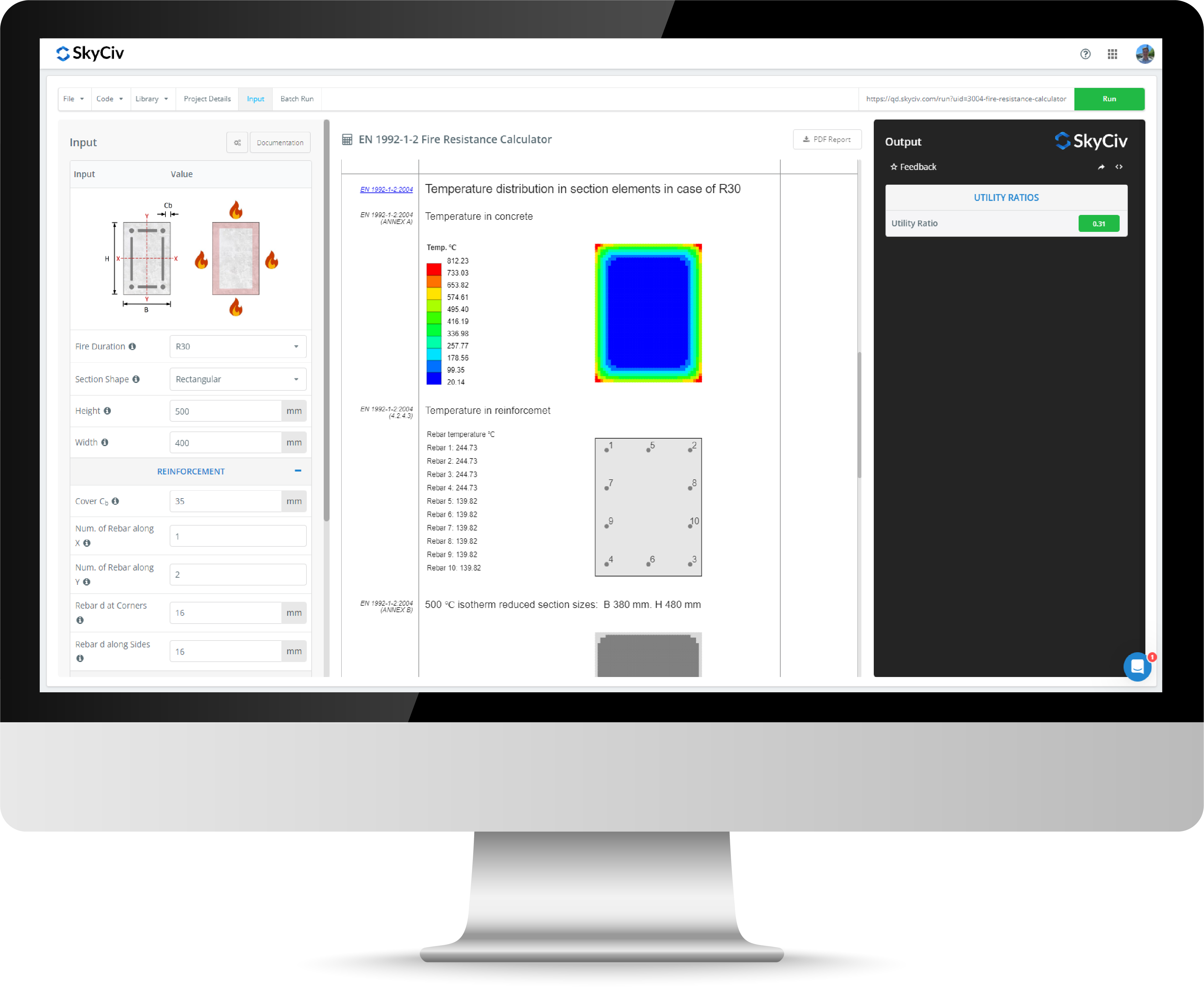Lap Length Calculator
The SkyCiv Lap Length Calculator is a free tool designed to help structural engineers determine development and lap lengths for reinforced concrete. The lap length software supports the following global standards:
- Australian Standards - AS 3600:2018
- United States - ACI 318-19
- Europe/UK - Eurocode 2: Design of Concrete Structures (EN 1992-1-1)
The lap length calculator supports all available rebar sizes and concrete strengths. It supports options for reinforcement bundling, lightweight concrete and plain (round) bar reinforcement. By using this tool, engineers can calculate lap length reinforcement accurately for various design scenarios, ensuring that rebar lap length requirements are met in accordance with the relevant standards. The calculator also provides guidance on proper bar spacing, cover, and anchorage conditions, helping to verify that all reinforcement lap length considerations are satisfied for safe and efficient concrete design.
After entering the required parameters, users receive a comprehensive and detailed calculation report, including lap length reinforcement and development length results, as well as step-by-step explanations of the governing equations. The intuitive interface allows engineers to quickly adjust input values and immediately see updated results, making the calculator ideal for both preliminary design and final detailing. With this tool, you can optimize rebar lap length and reinforcement lap length while maintaining compliance with international standards and construction best practices. The clear reporting and visualization of lap length reinforcement make it easy to review and confirm that all design requirements are met before construction. This tool is part of the SkyCiv Quick Design Library.
About the Lap Length Calculator
What is reinforcement lap length?
Rebar lap length is the minimum overlap required between two reinforcing bars to ensure full stress transfer between the bars. Reinforcement lengths in beams/slabs can often be limited due to fabrication and construction constraints, meaning lapped splices are required to achieve reinforcement continuity throughout the structural element. Lap length is generally proportional to the development length of the reinforcement in the splice connection. Reinforcement can be spliced by lapping, welding or mechanical couplers.
Is reinforcement lap length different to development length?
Development length is the minimum length of reinforcing bar that needs to be embedded into concrete for it to develop its full yield strength. If reinforcement is embedded less than its development length, it may de-bond from the concrete before being stressed to its full capacity upon loading. Reinforcement development lengths differ for tensile and compressive loading. Providing cogs, hooks and terminators at the ends of reinforcement can reduce its required development length.
What factors affect development and lap length?
Development length is predominantly governed by two factors:
- Reinforcement Yield Force (kN / kip): The force required to fully yield the reinforcing bar. This force is governed by reinforcement diameter (db) and material strength (fsy). Larger bars with higher strengths will generally require longer development lengths.
- Concrete Strength (MPa / ksi): Higher concrete strengths allow for better transmission of stress into the reinforcing bar, reducing the required development length.
Factors such as reinforcement cover, transverse reinforcement, bundling and concrete density can also affect development length.
How to perform lap length calculation with the lap length software?
Our calculator makes lap length calculation easier than ever. Begin by entering the required inputs:
- Concrete Grade (MPa / ksi)
- Reinforcing Bar Diameter (mm / in)
- Reinforcement Strength Grade (MPa / ksi)
Next, click the run button in the top right of the calculator to get your results:
- Tension Development Length
- Compression Development Length
- Tension Lap Length
- Compression Lap Length
Lap length calculator FAQs
1. What design code is this lap length calculator based on?
Our lap length calculations support multiple international concrete design codes:
- Australian Standards: AS 3600:2018
- United States: ACI 318-19
- Europe/United Kingdom: Eurocode 2 (EN 1992-1-1)
References to relevant sections of the selected code are included in the generated calculation report.
2. Can I input the material properties of steel and concrete?
Yes, the calculator allows you to input concrete and reinforcement properties according to the selected design code:
- AS 3600: Concrete grades and reinforcement strengths as per AS 3600 provisions.
- ACI 318: Concrete strengths and rebar grades as per ACI 318 provisions.
- Eurocode 2: Concrete and reinforcement grades as per EN 1992-1-1 requirements.
The tool automatically adjusts calculations based on the chosen standard, including factors such as lightweight concrete and epoxy coatings where applicable.
Related tools
Ready to upgrade? Check out our flexible plans.



